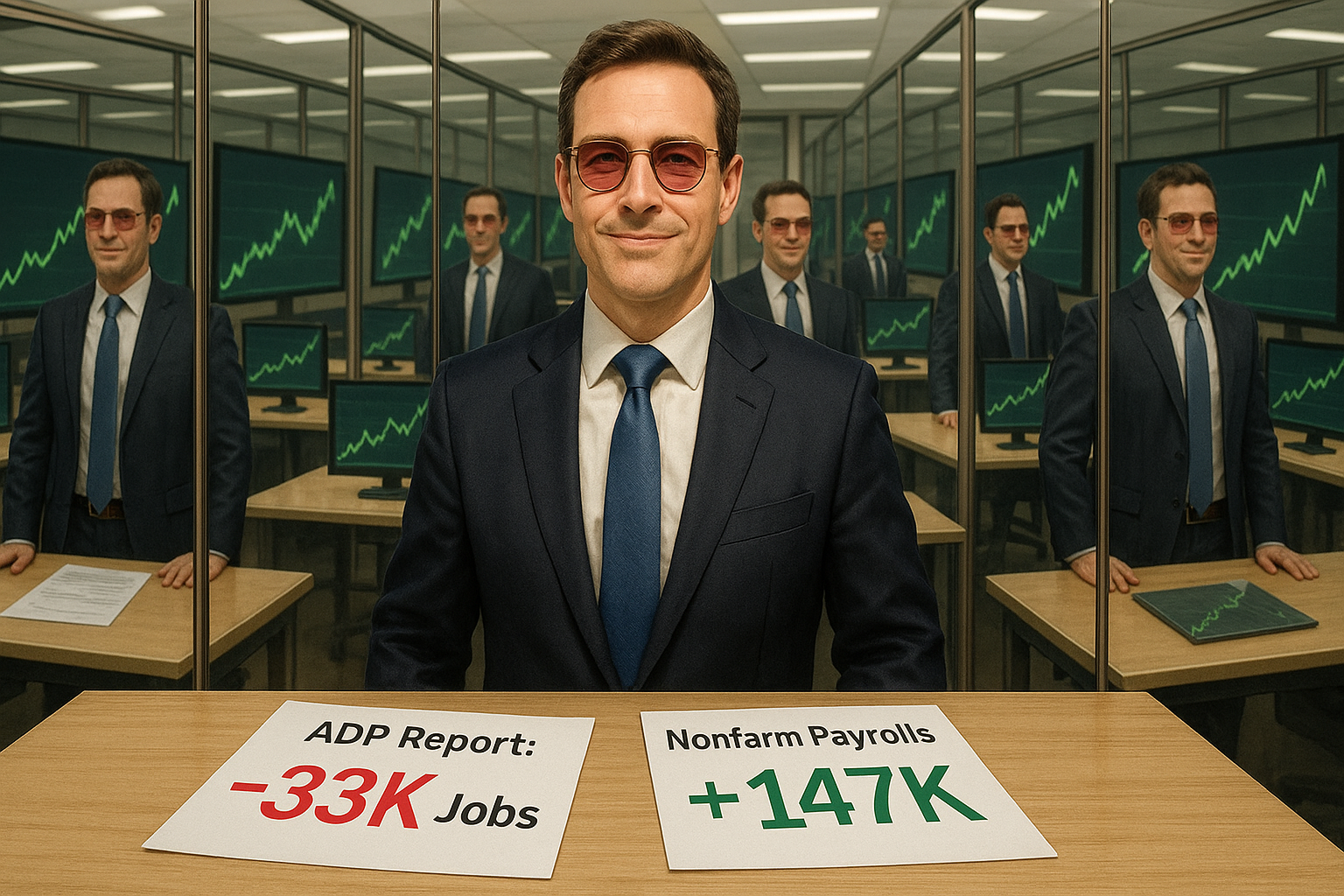When I started in this business decades ago, there was a quaint notion that economic data actually meant something. Good news was good for stocks, bad news was bad. We analyzed reports, pored over forecasts, and made reasoned bets based on what the numbers told us about the economy's direction.
How adorably naive we were.
This week provided yet another masterclass in the market's newfound ability to interpret literally any data point as unambiguously positive. It's like watching someone with rose-colored glasses stumble through a house of mirrors—no matter which way they turn, they keep seeing exactly what they want to see.
Take Wednesday's ADP employment report, which showed private payrolls declining by 33,000 jobs versus expectations of 100,000 job gains. That's not just a miss—it's a complete inversion of the forecast. In any remotely rational world, this might trigger some concern about economic health.
The market's reaction? "Fantastic news! The Fed will cut rates more aggressively!" Stocks promptly rallied 0.5% to fresh all-time highs.
Then Thursday arrived with the Bureau of Labor Statistics' nonfarm payrolls report showing job growth of 147,000—handily beating the 110,000 forecast. Surely this contradicts Wednesday's narrative about a weakening labor market necessitating more rate cuts?
The market considered this for approximately 12 seconds before declaring: "Magnificent! The economy is robust, corporate profits will soar!" Stocks climbed another 0.3% in premarket trading, setting up yet another all-time high.
I call this the "heads I win, tails you lose" theory of market dynamics. Weak economic data means more Fed accommodation. Strong economic data means more corporate profits. There is literally no configuration of economic reality that doesn't translate to "stocks must go up."
This phenomenon reveals something fundamental about market psychology in 2023. We've entered a phase where narrative trumps data, where the desire for continued gains has overwhelmed traditional analytical frameworks. The market is no longer interpreting economic signals—it's retrofitting them into a predetermined conclusion.
Look, I'm not some permabear grousing about missing the rally. Markets have their own logic, and fighting the trend is a fool's errand. But there's something unsettling about watching the collective wisdom of financial markets perform increasingly elaborate mental gymnastics to justify buying at higher and higher prices.
The most striking aspect is how transparent it's become. Market commentators barely attempt to maintain consistent analytical frameworks anymore. They simply identify whatever aspect of a report—any aspect—that could conceivably be construed as supportive of higher asset prices, then trumpet that interpretation while ignoring everything else.
As our input so colorfully suggests, it probably wouldn't matter if Donald Trump unveiled economic plans written on the back of a taco shop menu on November 9th. The market would likely find a way to rally on anticipation of the "TACO" effect (Trump's Alternative Commercial Opportunities, obviously).
This doesn't mean a correction is imminent—markets can maintain irrational exuberance far longer than skeptics can maintain their sanity. But it does suggest we've entered a peculiar phase where traditional economic analysis has been subordinated to narrative construction.
For investors, this creates a challenging environment. When all news becomes good news, how do you calibrate risk? When contradictory data points are simultaneously bullish, what signals actually matter?
Perhaps the real danger isn't a particular economic report or policy shift, but the moment when the market loses confidence in its own ability to transform every development into a reason to buy. When the alchemy that turns lead into gold suddenly stops working, that's when things get interesting.
Until then, we'll continue to watch markets climb the proverbial wall of worry—except it's less of a wall and more of a bouncy castle at this point.
